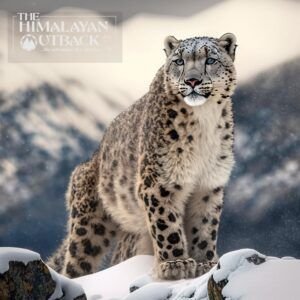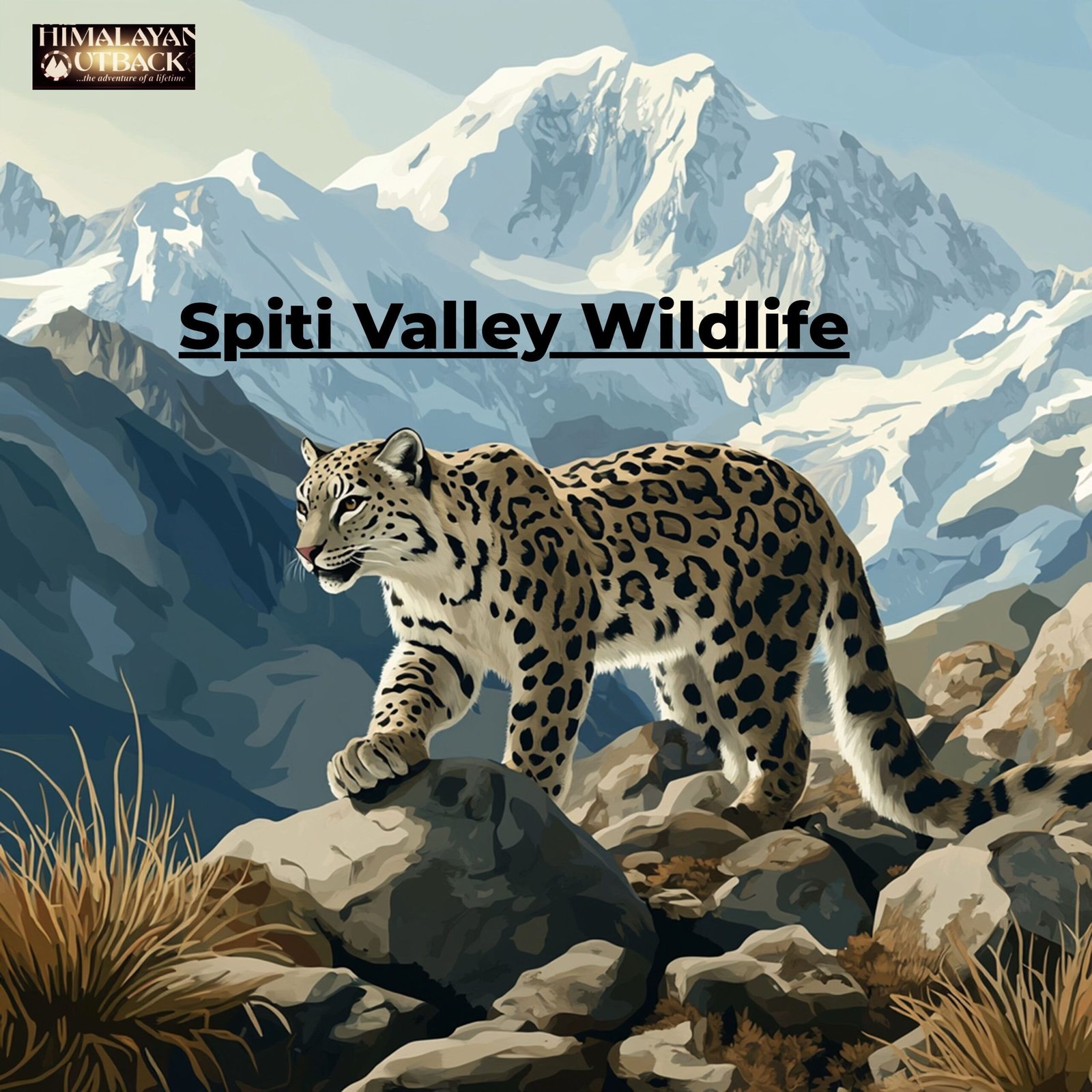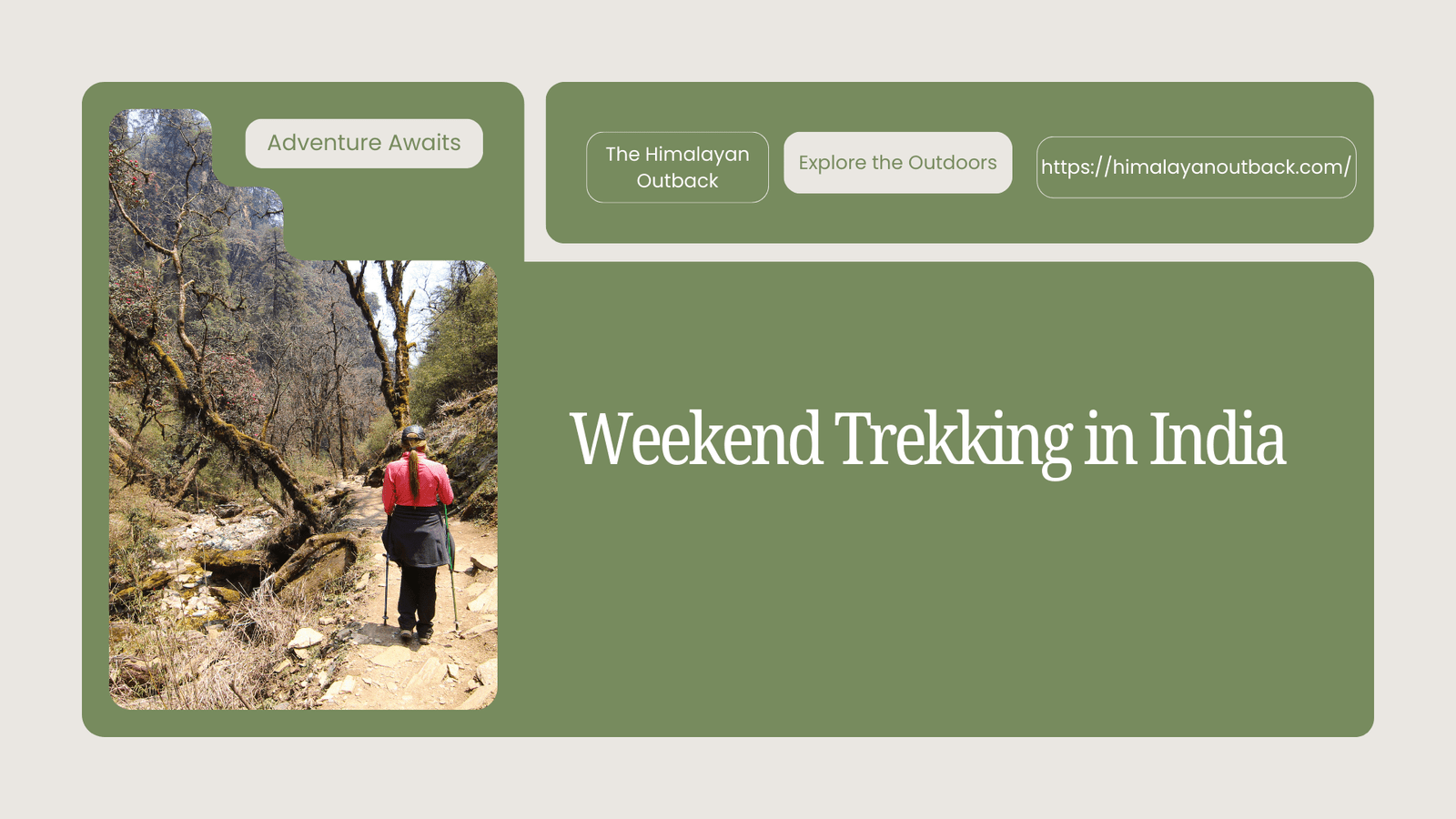Few creatures capture the imagination quite like the elusive snow leopard. Known as the “Grey Ghost of the Mountains,” this magnificent cat roams the high-altitude cliffs and rugged terrains of the Himalayas, virtually unseen by human eyes. Nowhere is this enigmatic presence more profound than in the Spiti Valley, where myth and reality intertwine to weave tales of mystery and majesty.
This blog post dives into the captivating world of the snow leopard in Spiti Valley, shedding light on its mystical allure and the efforts to protect this vulnerable species.
The Grey Ghost of the Mountains Revealed

The snow leopard, with its pale fur and agile grace, is aptly nicknamed the Grey Ghost of the Mountains. Native to the mountain ranges of Central and South Asia, these leopards are masters of camouflage, blending seamlessly into their rocky, snowy habitats. For wildlife enthusiasts and adventure travelers, the chance to glimpse a snow leopard in Spiti Valley is a dream come true. However, the reality is that these sightings are incredibly rare due to the snow leopard’s elusive nature and vast territories.
Living at altitudes between 9,800 and 14,800 feet, these cats have adapted perfectly to their harsh environment. Their thick fur, wide paws, and long tail help them maintain balance and warmth in the icy wilderness. While stories of the snow leopard’s spectral presence abound, actual encounters remain something of a wildlife enthusiast’s holy grail.
Cultural Significance of the Snow Leopard
In the Spiti Valley and beyond, the snow leopard is not just a creature of the wild but a symbol of cultural heritage and spiritual significance. Locals revere these big cats, often portraying them in folklore and religious art. In many Himalayan communities, snow leopards are seen as protectors and symbols of strength, resilience, and the delicate balance of nature. This cultural reverence enhances the allure of the snow leopard, making it a beacon of fascination for conservationists and travelers alike.
The snow leopard’s presence in the Spiti Valley also plays a crucial role in the ecosystem. As apex predators, they regulate the populations of prey species, maintaining the health and stability of the region’s complex ecological web. Understanding and preserving this balance is vital for the conservation efforts that aim to ensure the snow leopard’s survival.
Conservation Efforts in Spiti Valley
Conservationists have long recognized the snow leopard’s precarious status. With fewer than 6,500 remaining in the wild, the species is classified as vulnerable. Human-wildlife conflict, habitat loss, and poaching pose significant threats to its survival. In the Spiti Valley, dedicated organizations work tirelessly to safeguard these majestic cats.
Community-based conservation initiatives have seen remarkable success in recent years. Local communities, supported by NGOs and government agencies, actively participate in protecting snow leopard habitats. Programs focusing on education, sustainable tourism, and non-lethal predator control methods have helped reduce conflict and foster coexistence between humans and snow leopards.
The Role of Sustainable Tourism
Sustainable tourism offers a beacon of hope for snow leopard conservation in Spiti Valley. By attracting wildlife enthusiasts and adventure travelers to the region, responsible tourism provides essential funding and support for conservation programs. Visitors seeking the thrill of spotting a snow leopard contribute to the local economy, creating incentives for communities to protect these iconic creatures.
Eco-friendly practices, such as guided wildlife tours and community-run homestays, ensure that tourism benefits both the environment and local residents. Travelers can experience the magic of the Spiti Valley while supporting efforts to preserve its natural and cultural heritage. These initiatives create a win-win situation, fostering a deeper connection between people and the land they explore.
Preparing for a Snow Leopard Expedition
For those ready to brave the cold and venture into the heart of the Himalayas, preparing for a snow leopard expedition in the Spiti Valley is essential. The region’s harsh climate demands appropriate gear and preparation. Layered clothing, sturdy boots, and high-quality optics are must-haves for any wildlife enthusiast hoping for a glimpse of the elusive snow leopard.
Travelers should also be prepared for the physical challenges of trekking at high altitudes. Acclimatization is crucial to avoid altitude sickness, and a reasonable level of fitness is necessary to navigate the rugged terrain. Guided tours led by experienced local trackers can significantly enhance the chances of spotting the snow leopard while ensuring safety and cultural understanding.
Marveling at Spiti Valley’s Biodiversity
While the snow leopard may be the crown jewel of Spiti Valley wildlife, the region boasts an astounding array of biodiversity. From ibex and blue sheep to Tibetan wolves and Himalayan griffons, the valley teems with life. This rich tapestry of fauna offers endless opportunities for wildlife enthusiasts to witness the wonders of nature and deepen their appreciation for the interconnectedness of all species.
In addition to its remarkable animal inhabitants, Spiti Valley is home to a unique assemblage of plant life. The harsh conditions have given rise to resilient flora adapted to extreme altitudes and temperatures. Delicate wildflowers and hardy shrubs paint the landscape with splashes of color, offering a stunning contrast to the stark, snow-capped peaks.
Adventure Awaits in the Spiti Valley
Beyond its wildlife, the Spiti Valley beckons adventure travelers with a wealth of activities. Trekking, mountain biking, and river rafting are just a few of the pursuits that await intrepid explorers. The valley’s dramatic landscapes, dotted with ancient monasteries and traditional villages, provide the perfect backdrop for any adventure.
Cultural immersion is another highlight of any visit to the SpitiValley. Engaging with local communities, learning about their customs, and participating in traditional festivals offer an enriching experience that deepens the connection to the region and its people. Adventure travelers will find much to explore and savor in this breathtaking corner of the world.
Photography and the Snow Leopard
For photographers, capturing the elusive snow leopard is the ultimate prize. This magnificent cat’s ability to blend into its surroundings presents a unique challenge, requiring patience, skill, and a keen eye. Photographers who rise to the occasion will be rewarded with images that tell the story of the snow leopard’s survival in one of the planet’s harshest environments.
Successful wildlife photography requires an understanding of the subject and its habitat. Observing the snow leopard’s behavior and learning to interpret its tracks and signs are essential skills for photographers seeking to document these creatures in the wild. The resulting images serve as powerful tools for raising awareness and supporting conservation efforts.
Diving into the Myths of the Snow Leopard
The snow leopard’s enigmatic nature has given rise to a rich tapestry of myths and legends. Throughout history, cultures across the Himalayas have woven tales of this elusive creature, imbuing it with mystical qualities and supernatural powers. These stories add an element of wonder to the pursuit of glimpsing the snow leopard in its natural habitat.
One popular legend portrays the snow leopard as a guardian spirit, watching over the mountains and their inhabitants. Other tales speak of the leopard’s ability to vanish into thin air, evoking its ghostly moniker. For travelers to Spiti Valley, understanding these myths enriches the experience of searching for the snow leopard, connecting them to a timeless tradition of storytelling.
Supporting Snow Leopard Conservation
The plight of the snow leopard calls for global support and collective action. By raising awareness and contributing to conservation efforts, individuals can make a difference in the future of this iconic species. Donations, volunteering, and adopting sustainable practices are just a few ways to get involved and ensure the continued survival of the snow leopard in Spiti Valley and beyond.
Organizations such as the Snow Leopard Trust and local conservation groups play a crucial role in funding research, protecting habitats, and engaging communities. By supporting these initiatives, wildlife enthusiasts, conservationists, and adventure travelers can help secure a future where snow leopards continue to roam the mountains they call home.
Concluding Thoughts on the Grey Ghost of the Mountains
The snow leopard in Spiti Valley represents more than just a wildlife encounter—it’s a symbol of the delicate balance between nature and humanity. This blog post has explored the captivating allure of the snow leopard, its significance to local cultures, and the efforts to protect it. For those who dream of witnessing the Grey Ghost of the Mountains, the Spiti Valley offers a rare opportunity to connect with one of nature’s most mysterious and majestic creatures.
To learn more about snow leopard conservation or plan your expedition to the Spiti Valley, explore these resources and take action to support this extraordinary species. The Ghost of the Mountains awaits, and with your help, it will continue to inspire wonder for generations to come.






